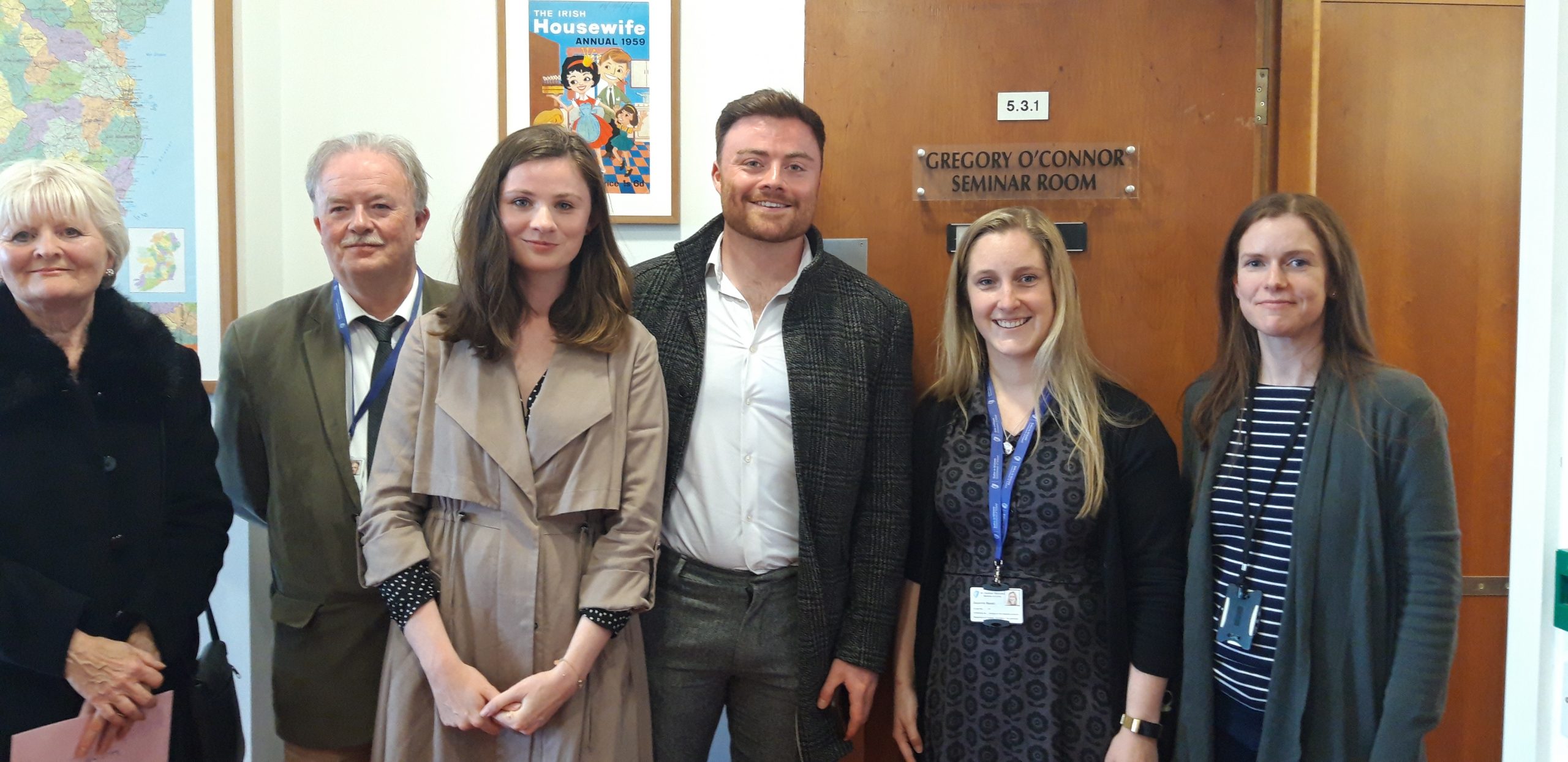Behind the Scenes
Behind the Scenes: Talk-‘Treating shellshock and severed limbs: WWI veterans at Leopardstown and Blackrock hospitals’

As we all know outreach and educational events primarily occur online at the moment and arguably the talk by Dr. Eoin Kinsella, held online on 30th September 2020, reached a wider audience than may have been achieved in person. Over 121 people logged in to hear his talk on ‘Treating shellshock and severed limbs: WWI veterans at Leopardstown and Blackrock hospitals’ which was held as a joint National Archives and Royal Irish Academy contribution to the Dublin Festival of History.
The image of the shellshocked soldier is one that epitomises the horror of World War One. It was a mental illness unseen before but was rife among returning soldiers traumatised by the conflict.
Dr. Kinsella began by explaining that between 1914 and 1919 over 20,000 wounded men arrived in Dublin leaving the hospital system totally overwhelmed. This lead to more than 100 auxiliary hospitals being established by organisations such as the Red Cross.
In response to this situation Gertrude Dunning made an extraordinary act of generosity in gifting her estate of Leopardstown Park House, which was left to her on the death of her husband, to the Office of Military Pensions on 16 October 1917 ‘for the use of the army and navy for as long as is needed’.
Both Leopardstown and Blackrock hospitals were in the ownership of and administered by the British Ministry of Pensions up until the closure of Blackrock hospital in 1931 and, curiously, up until 1979 for Leopardstown Hospital.
Treatment for shellshock, which at the time was termed neurasthenia, was woefully inadequate but the tranquil grounds of the 100 acre Leopardstown Estate were allocated for this specialised treatment. Opening to the first patients in March 1918 there were beds for only 32 patients suffering from mental trauma.
While Blackrock Hospital, formerly the Meath Industrial School on Carysfort Avenue, catered for the medical treatment of eventually over 500 patients. It became a centre of excellence in the treatment of injuries incurred in conflict, applying innovative medicine in bone grafts, tendon transplants and the specialisation of fitting artificial limbs. Dr Kinsella shared this silent clip from the British Pathé archive featuring the hospital: https://www.youtube.com/watch?v=ihh9EluajBY
By 1921 the waiting list for treatment at Leopardstown Hospital had reached 762 patients in need, showing that the specialist treatment for shell shock victims was woefully inadequate. By 1925 over £25,000 had been spent on expansion of the hospital which increased the facility to 134 beds, however, with the closure of Blackrock Hospital in 1931 the situation was made worse as medical conditions other than shell shock were then treated at Leopardstown.
In fact the patient profile changed so considerably at Leopardstown with far fewer shell shock victims being treated after 1931, it can be surmised that the specialist treatment for this condition was no longer available to ex-servicemen and that the patients were subsumed into mental asylums.
World War Two ensured a new wave of war pensioners in need and consequently the British government continued to fund the hospital for concern that ex-servicemen of the British forces would not receive appropriate treatment by the Irish government. Discussions on handing over the hospital to Irish administration continued throughout the 1970s and were finally resolved in 1979 when it was transferred.
Dr. Kinsella explained that there is a dearth of records for Blackrock hospital but that Leopardstown has more extensive archives which better reveals the history of the institution. He proved that both hospitals provided innovative care for their patients whether their ailment was physical or mental.
Leopardstown Park House is still in use today and stands as a tribute to the generosity of Gertrude Dunning who had the foresight to gift it for ‘as long as is needed’ over 100 years ago.
Dr. Kinsella has written extensively about the hospital in his book Leopardstown Park Hospital, 1917–2017: A Home For Wounded Soldiers (2017).
Natalie Milne, Archivist


